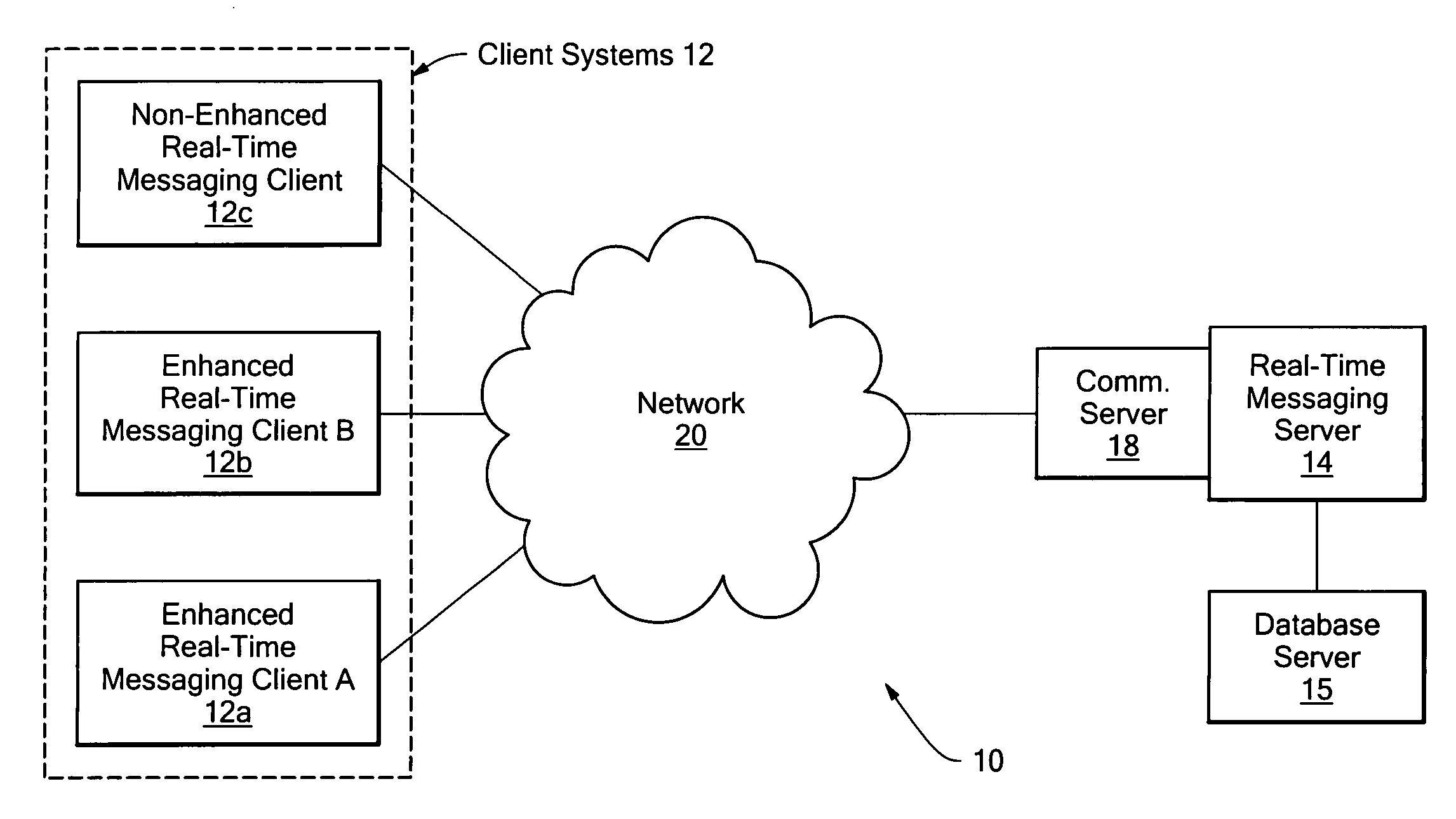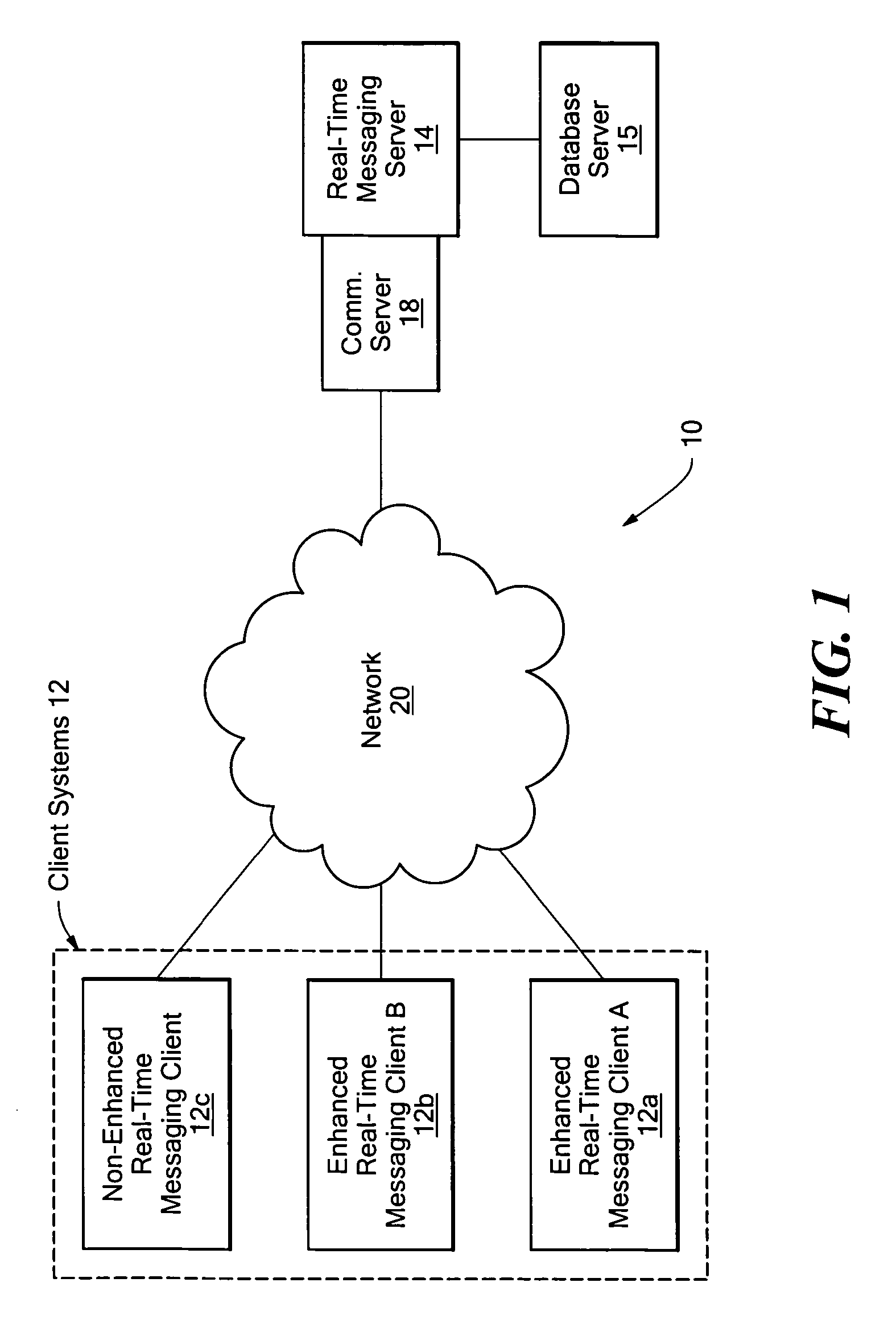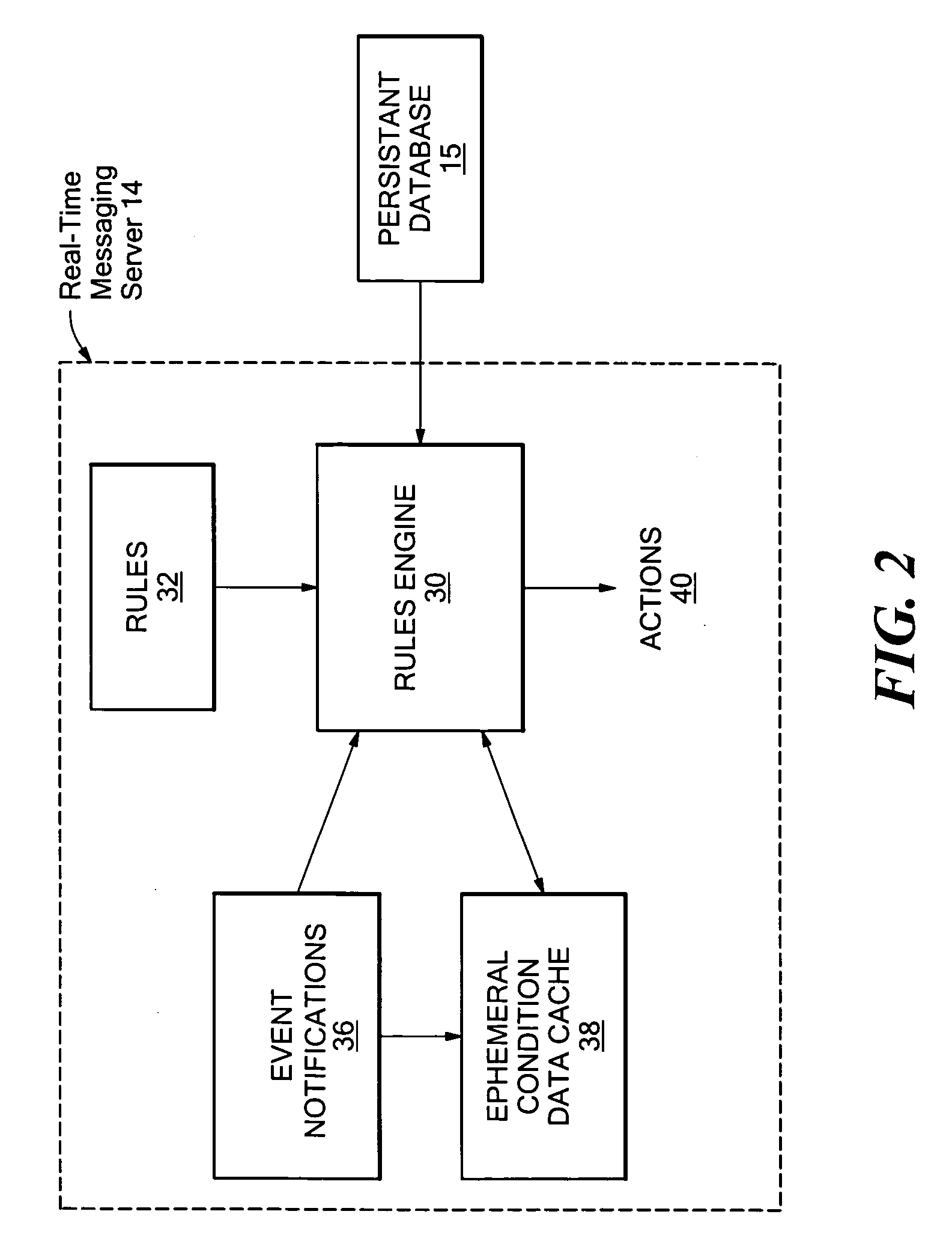Rules based real-time communication system
a real-time communication and rule-based technology, applied in the field of real-time communication, can solve the problems of not becoming widely accepted as business tools, sending messages that do not know when, and sending messages that cannot ascertain when a response will be obtained, etc., to facilitate real-time group interaction
- Summary
- Abstract
- Description
- Claims
- Application Information
AI Technical Summary
Benefits of technology
Problems solved by technology
Method used
Image
Examples
example 1
Meet As Soon As Present (ASAP)
[0084]An example of a useful facility that may be provided by the disclosed system is a method of scheduling a meeting when all of the participants are available, referred to here as Meet ASAP. For example, in the case where a sender, A, wants to convene a meeting of three people, himself, B, and C. A selects B and C from his list of contacts and presses a Meet button within the graphical user interface. The system checks the presence of B and C and determines that B is online but C is not, and that a stand-in for C is available. It then gives A three choices:[0085]1. Hold the meeting with just B.[0086]2. Hold the meeting with B and with C's designated stand-in.[0087]3. Wait until B and C are both present.
[0088]In the case where A chooses option 3, the system monitors the presence of A, B, and C and starts the meeting when all three are present. To support this choice, the disclosed system provides the following features in a highly scalable manner, and...
example 2
Routing & Approval
[0099]The disclosed availability and rules-based mechanism that allows the effective delivery of real-time actions among users, such as the convening of meetings, can also be used for other real-time actions. For example, the disclosed aggregated presence information and availability filtering, together with real-time communication, can be used to route documents for revision and approval in a timely and efficient manner. As with a meeting request, a document routing form, for example filled out through a GUI on a client system, and provided to the rules engine as an event notification, can contain a list of users that are needed to review an electronic document. In the disclosed system, the routing of the document among the users in the review list may be determined in response to the presence-based availability of specific users in the list. For example, the disclosed system may operate by temporarily skipping users in the review list that are not currently avail...
example 3
Sequential Scheduling
[0101]The disclosed system may further be embodied to effectively support sequential meeting scheduling. In general, meeting scheduling systems attempt to display people's free time, allow the meeting requester to propose a time, and then send out invitations which can be either accepted or refused. Using the disclosed system, meeting invitations, such as email or other electronic data messages, may be sent out to one user at a time, in a similar manner to that described above for document routing. Accordingly, the meeting invitation is sent to users based on their current presence-based and user configured availability. The meeting invitee user list may also optionally be processed by transmitting an invitation to users on the list based on an ordering in which those users considered or designated as the most senior, and / or that are considered or designated as the most difficult to schedule, are contacted first, with each user specifying a range of available ti...
PUM
 Login to View More
Login to View More Abstract
Description
Claims
Application Information
 Login to View More
Login to View More - R&D
- Intellectual Property
- Life Sciences
- Materials
- Tech Scout
- Unparalleled Data Quality
- Higher Quality Content
- 60% Fewer Hallucinations
Browse by: Latest US Patents, China's latest patents, Technical Efficacy Thesaurus, Application Domain, Technology Topic, Popular Technical Reports.
© 2025 PatSnap. All rights reserved.Legal|Privacy policy|Modern Slavery Act Transparency Statement|Sitemap|About US| Contact US: help@patsnap.com



